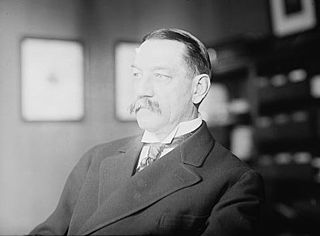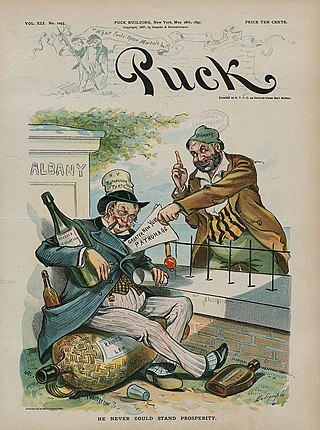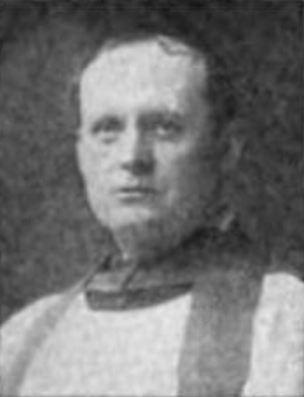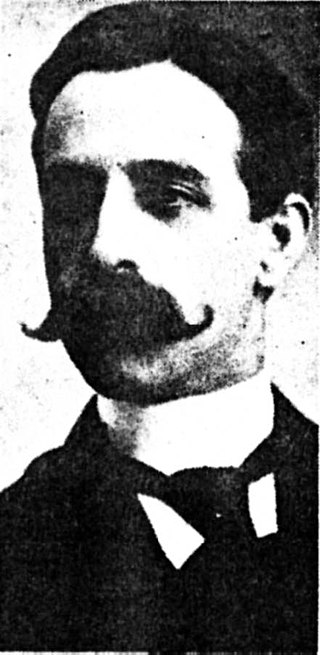Related Research Articles

The muckrakers were reform-minded journalists, writers, and photographers in the Progressive Era in the United States (1890s–1920s) who claimed to expose corruption and wrongdoing in established institutions, often through sensationalist publications. The modern term generally references investigative journalism or watchdog journalism; investigative journalists in the US are occasionally called "muckrakers" informally.

William Waldorf Astor, 1st Viscount Astor was an American-English attorney, politician, businessman, and philanthropist. Astor was a scion of the very wealthy Astor family of New York City. He moved to England in 1891, became a British subject in 1899, and was made a peer as Baron Astor in 1916 and Viscount Astor in 1917 for his contributions to war charities.

Franklin Knight Lane was an American progressive politician from California. A member of the Democratic Party, he served as United States Secretary of the Interior from 1913 to 1920. He also served as a commissioner of the Interstate Commerce Commission, and was the Democratic nominee for Governor of California in 1902, losing a narrow race in what was then a heavily Republican state.

Rupert Lee Blue was an American physician and soldier. He was the fourth Surgeon General of the United States from 1912 to 1920. He served as president of the American Medical Association in 1916–17.

Edwin Robert Anderson Seligman (1861–1939), was an American economist who spent his entire academic career at Columbia University in New York City. Seligman is best remembered for his pioneering work involving taxation and public finance. His principles for a progressive federal income tax were adopted by Congress after the passage of the Sixteenth Amendment. A prolific scholar and teacher, his students had great influence on the fiscal architecture of postcolonial nations. He served as an influential founding member of the American Economics Association.

Stouffer's is a brand of frozen prepared foods currently owned by Nestlé. Its products are available in the United States and Canada. Stouffer's is known for such popular fare as lasagna, macaroni and cheese, meatloaf, ravioli, and salisbury steak. It also produces a line of reduced-fat products under the Lean Cuisine brand name. In February 2023, Nestle Canada announced their intentions to wind down and exit the frozen meals and pizza business within the next six months.

The Levee District was the red-light district of Chicago from the 1880s until 1912, when police raids shut it down. The district, like many frontier town red-light districts, got its name from its proximity to wharves in the city. The Levee district encompassed four blocks in Chicago's South Loop area, between 18th and 22nd streets. It was home to many brothels, saloons, dance halls, and the famed Everleigh Club. Prostitution boomed in the Levee District, and it was not until the Chicago Vice Commission submitted a report on the city's vice districts that it was shut down.

Henry Waters Taft was an American lawyer and writer. He was the son of Alphonso and brother of President William Howard Taft. A renowned antitrust lawyer, he was a name partner at Cadwalader, Wickersham & Taft.

The New York State liquor tax law of 1896, also known as the Raines law, was authored by the New York State Senator John Raines and adopted in the New York State Legislature on March 23, 1896. It took effect on April 1, 1896, was amended in 1917 and repealed in 1923.

A Hoosier cabinet is a type of cupboard or free-standing kitchen cabinet that also serves as a workstation. It was popular in the first few decades of the 20th century in the United States, since most houses did not have built-in kitchen cabinetry. The Hoosier Manufacturing Co. of New Castle, Indiana, was one of the earliest and largest manufacturers of this product, causing the term "Hoosier cabinet" to become a generic term for that type of furniture. By 1920, the Hoosier Manufacturing Company had sold two million cabinets.

John Punnett Peters was an American Episcopal clergyman and Orientalist.
President Chester A. Arthur signed the Animal Industry Act on May 29, 1884 creating the Bureau of Animal Industry (BAI), an organization that was established under the United States Department of Agriculture. It replaced the Veterinary Division that had been created by the Commissioner of Agriculture in 1883, which had taken over for the Treasury Cattle Commission, Department of Treasury.

George H. Kendall (c.1854–1924) was the president of the New York Bank Note Company that printed stock certificates. He was also an art collector.

The Association for Improving the Condition of the Poor (AICP) was a charitable organization in New York City, established in 1843 and incorporated in 1848 with the aim of helping the deserving poor and providing for their moral uplift. The Association was one of the most active and innovative charity organizations in New York, pioneering many private-public partnerships in education, healthcare and social services.

Young's Hotel (1860–1927) in Boston, Massachusetts, was located on Court Street in the Financial District, in a building designed by William Washburn. George Young established the business, later taken over by Joseph Reed Whipple and George G. Hall. Guests at Young's included Mark Twain, Elizabeth Cady Stanton, William Lloyd Garrison, Charles Sumner, Rutherford B. Hayes, and numerous others.

Ogden Haggerty Hammond was an American businessman, politician and diplomat who served as United States Ambassador to Spain from 1925 to 1929. He was the father of Millicent Fenwick, a four-term Republican member of the United States House of Representatives from New Jersey.

Jacob J. Wise was a Republican mayor of Massillon, Ohio from 1898 until 1902. He was also the Clerk of Massillon City Council for Massillion from 1903 until 1910. In 1912 he was elected to Ohio Senate for the 80th General Assembly.

William Edward Parsons was an architect and city planner known for his works in the Philippines during the early period of American colonization in the country. As the consulting architect to the Philippine government from 1905 to 1914, he designed various structures throughout the country, most notably the Gabaldon school building plans.

Paul North Rice was an American librarian who served as Chief of the Reference Department of the New York Public Library, Executive Secretary of the Association of Research Libraries and President of the American Library Association.
References
- ↑ "Committee of Fourteen in Report for 1917 Denounces Tolerance of Pseudo Clubs". The New York Times . March 11, 1918. Retrieved 2012-01-17.
The Committee of Fourteen, which was organized in 1905 to fight commercialized vice as a result of widespread criticism of conditions in the city, in its annual report made public yesterday announced that it had found moral conditions well guarded, with isolated exceptions, around army camps near New...
- ↑ "The Fourteen Will Attempt to Get Brewers to Withdraw Their Backing". The New York Times. August 24, 1909. Retrieved 2012-01-17.
The Committee of Fourteen, which was formed for the purpose of suppressing Raines law hotels, according to announcement made yesterday, has entered into negotiations with brewing concerns and surety companies with a view of establishing an 'unofficial discretion' that would have the effect of preventing the opening of saloons or hotels of a disorderly character in the future.
- ↑ "Committee of Fourteen". New York Public Library . Retrieved 2012-01-17.
- 1 2 Mackey, Thomas C. (2005). Pursuing johns : criminal law reform, defending character, and New York City's Committee of Fourteen, 1920-1930. Columbus (Ohio): Ohio state university press. p. 111. ISBN 0814209882.